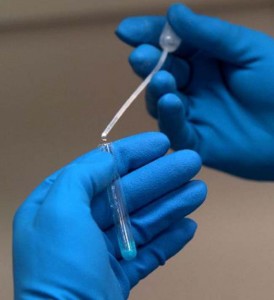People v. Brooks
New York Court of Appeals
No. 25
Decided on March 22, 2018
Issue: Whether the trial court properly employed a Frye procedure to rule on the foundation of the defense expert’s testimony and whether the trial court erred in admitting testimony of the nature of the defendant’s relationship with the victim and testimony from a witness who was told by the victim that the defendant had previously threatened her.
Holding: The Court of Appeals held that, although the trial court improperly employed the Frye procedure, the error was harmless; the testimony of eleven witnesses who testified as to the nature of the defendant’s relationship with the victim was permissible; and testimony from a witness who stated the victim told her defendant previously threatened her was inadmissible hearsay evidence but was harmless.
Facts: Nicholas Brooks was convicted by a jury of second-degree murder for killing his girlfriend in a Manhattan hotel room. Forensic testing was performed in the bathroom where the victim was found submerged in an overflowing bathtub. Test results showed Brooks’ DNA on a bathroom fixture, and the autopsy revealed signs of strangulation and fluid in the victim’s lungs. The examiner concluded the cause of death to be compression of the neck and drowning. The hotel’s video surveillance footage showed that only the Brooks and two hotel employees entered and exited the victim’s hotel room.
On appeal, Brooks argued that the trial court erred when it granted the People’s motion for a Frye hearing and when it issued various evidentiary rulings. The Appellate Division confirmed Brooks’ conviction.
Analysis: A Frye hearing is a general acceptance test to determine the admissibility of scientific evidence. It provides that expert opinion based on a scientific technique is admissible only where the technique is generally accepted as reliable in the relevant scientific community. Frye v. United States, 293 F 1013 (DC Cir 1923); People v. Wesley, 83 NY2d 417, 422 (1994).
The Frye method should not be confused with determining whether there was proper foundation for admitting general evidence. Instead, the Frye test functions to answer the question of whether the expert’s opinion sufficiently relates to existing data or is connected to existing data only by the ipse dixit of the expert. General Electric Co. v. Joiner, 522 US 136, 146 (1997).
In the present case, the Court of Appeals determined that the trial court did improperly employ the Frye procedure to rule on the foundation of the defendant’s expert testimony. However, the Court held that the error was harmless. No explanation as to why the trial court erred was included in the Court of Appeals’ holding.
The Court of Appeals also rejected Brooks’ contention that the trial court’s admission of character testimony from eleven witnesses. Brooks argued the testimony was impermissibly prejudicial and cumulative. However, the Court concluded that the trial court’s limiting instruction to the jury to only use the evidence to establish the nature of Brooks’ relationship to the victim was sufficient.
The Court of Appeals did, however, determine that the trial court erred in admitting testimony about an argument that occurred more than a month before the murder. This testimony was based on a conversation between the witness and the victim, in which the victim stated that Brooks had threatened to kill her. This testimony should have been excluded as it constituted improper double hearsay. Again, however, the Court of Appeals held that the improper admission of hearsay evidence was harmless in light of the overwhelming evidence.

